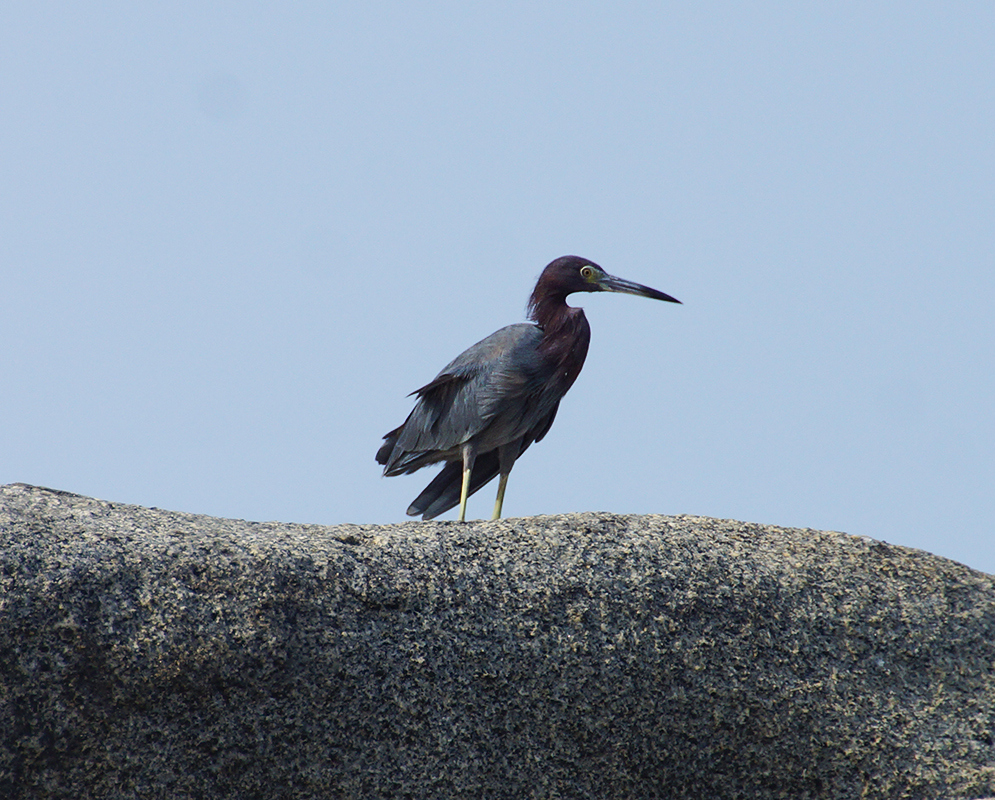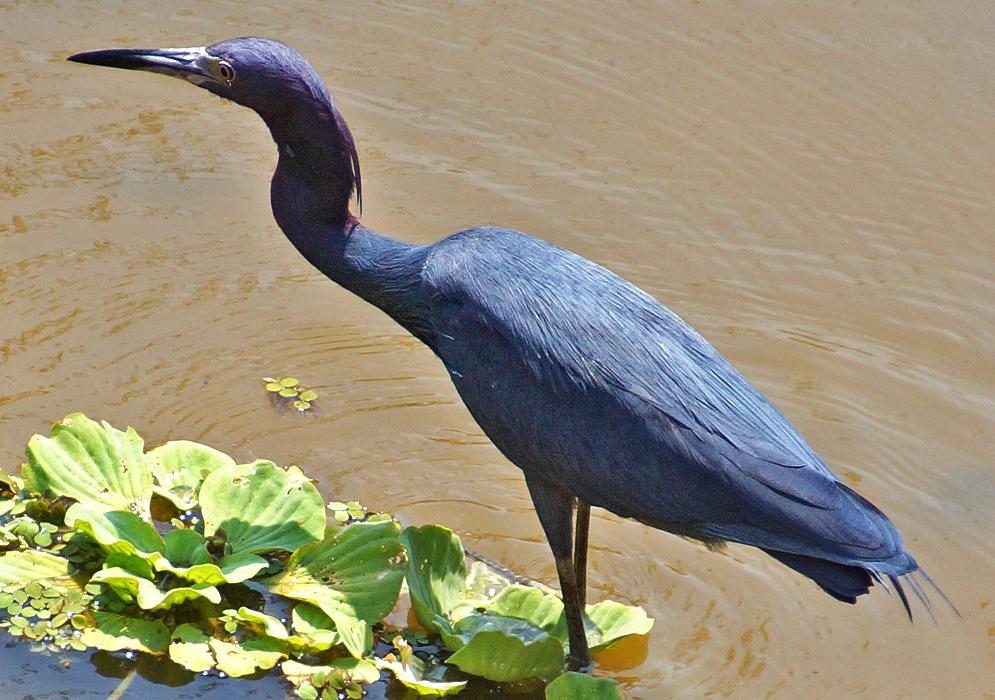This post has 11 Simple Fields-fields attached. Show fields.

The Little Blue Heron is a small heron. Adults are characterized by their darkly colored bodies, with purple-maroon heads and blue bodies. During the breeding season, their heads turn a striking dark red. Juveniles, in contrast, are almost entirely white, with their upper primaries being somewhat dark. This coloration causes them to resemble the Snowy Egret, which may offer them increased protection against predators. As they mature, they transition to adult coloration, with a mix of light and dark feathers. Both sexes are similar in appearance, with a body length of about 22 to 29 inches, a wingspan of 39 to 41 inches, and an average weight of around 14 ounces. The range of the Little Blue Heron is extensive, covering a large part of the Americas, from the United States to northern South America. They inhabit both saltwater and freshwater ecosystems, including ponds, lakes, swamps, marshes, and lagoons, and sometimes salt marshes and marine coastlines. In much of their range, they are resident breeders, but some northern populations migrate to the southeastern U.S. or beyond during winter. Little Blue Herons are not particularly energetic. They typically walk slowly and deliberately around marshes, often standing motionless or retracing their steps while hunting. They feed mainly during the day, using their long legs to wade in the water in search of prey. They employ a unique technique of raking the ground with their foot to disturb prey and catch it with their long bill. Interestingly, juveniles have been observed foraging alongside Snowy Egrets, which seems to increase their chance of catching fish and thus survival. Diet-wise, they are carnivorous, feeding on fish, frogs, lizards, turtles, snakes, and various crustaceans, as well as grassland insects when wet areas dry up. These herons are monogamous breeders, with males establishing small territories in the forks of trees and performing a 'stretch display' to attract females. Nesting typically occurs in groups at the edges of other heron colonies. Clutch sizes vary, with 3 to 5 eggs laid in April. Both parents incubate the eggs for about 22 to 24 days and feed the young by dropping food into their nest and later directly into their mouths. Young herons leave the nest at about 3 weeks, becoming fully independent by 42 to 49 days old and reaching breeding age at one year. Despite their extensive range and large population size, the Little Blue Heron's population is in decline, primarily due to exposure to heavy metals, which adversely affect young birds. The species is categorized as Least Concern, with a very large population size. Photographed in Tayrona National Park, Colombia.



